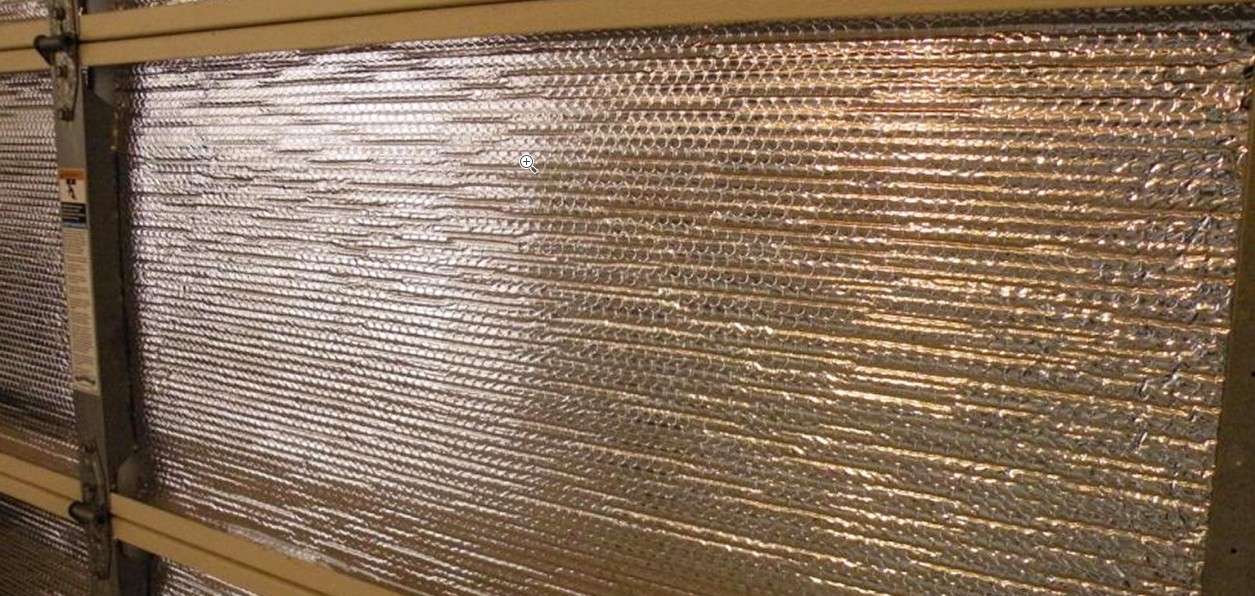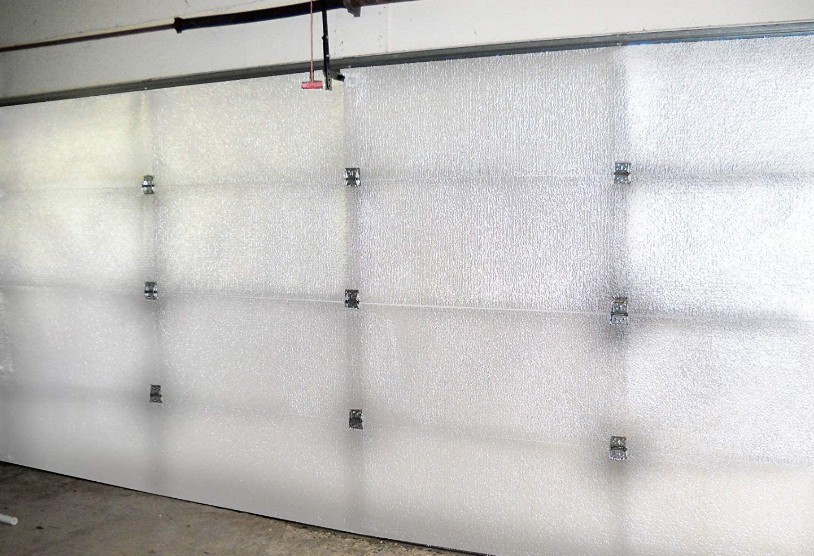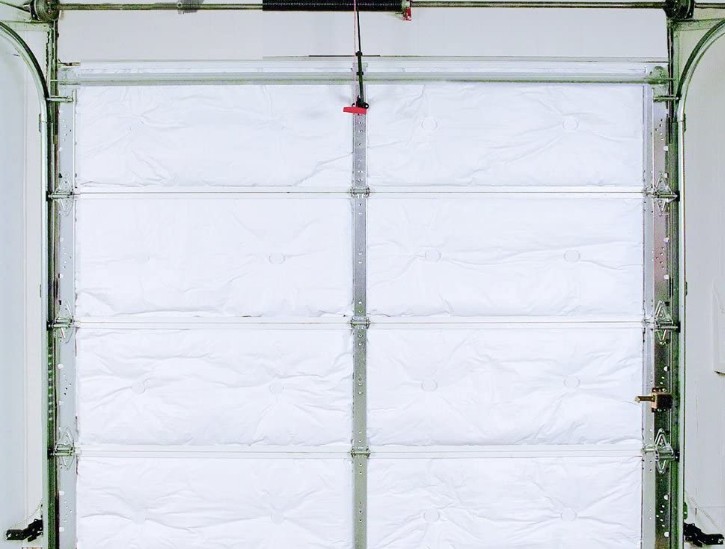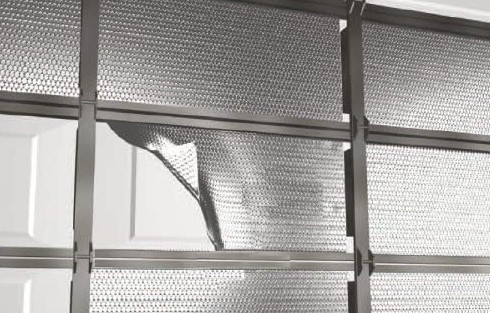What is the Best Way to Insulate a Garage Door?
When most of us plan to insulate the garage, we always think of the floor, walls, and ceiling and assume the garage door requires no insulation. The reality is, heat in the whole house will flow from warmer areas to colder areas until the temperature is equal. Therefore, when you turn the home heater on during winter, heat will circulate in the living area and flow into the cool garage and escape to the outside, making your heater or cooler work twice as hard.
If you’re looking to reducing your garage’s heating and cooling costs, you should consider insulating the garage, including the floor, walls, ceiling, and garage door. You can apply insulation such as fiberglass, rigid foam, spray foam, cellulose, and radiant barriers. Choosing the best insulation for the garage door may be challenging, but this article will help you with the information you need to make the right choice.
What is the best way to insulate a garage door?
There are several ways you can insulate your garage door and keep it energy efficient, but due to the garage door folding or hinging, they tend not to last too long. Here are some of the temporary insulation options you have for your garage door during the winter months.
1. Foam insulation
Foam is a popular insulation medium due to its easy installation that you can do it yourself. There are two types of foam insulation, namely:
Rigid foam
The foam board is a rigid Styrofoam that comes in sheets of 4-foot by 8-foot and thickness of 1/2 inch to 4 inches. The rigid foam is lightweight, easy to use but also has a high insulating value for little thickness. They come in three main types including; expanded polystyrene (EPS), extruded polystyrene (XPS), and polyisocyanurate.
Spray foam
You apply this insulation by spraying it on the garage door surface and wait until it dries solid; however, it is not the most effective insulation method as it has a low R-value. You cannot also apply the spray when it is cold as it requires sunny weather to dry correctly. Unlike other insulation methods, spray foam does not sag or break, making it more long-lasting. It is also great for sealing air gaps and structural issues.
2. Fiberglass insulation
Fiberglass is the most popular insulating material in most homes since it is the most inexpensive and has a high R-value. It comes in pre-cut batts and rolls or as rigid boards that can fit between studs, joists, and beams. It is also best to use paper-faced around the open edges of the fiberglass insulation or use encapsulated batts wrapped in plastic film to give a more finished look and prevent fiberglass particles from floating in the air. Fiberglass particles can cause respiratory issues when inhaled or cause itchiness when in contact with the skin.
3. Cellulose insulation
Cellulose is typically from recycled paper products and cardboard, but it goes through chemical treatment that makes it fire resistant. Like sprayed foam, it is sprayed into cavities using a blowing machine, making it fluff up but has a higher R-value than sprayed foam. Unfortunately, cellulose is also the most expensive insulating medium due to its extensive manufacturing process, but it is the most eco-friendly option. Since it consists primarily of recycled materials, it degrades over time and typically lasts between 20 to 30 years.
4. Reflective insulation
Radiant barriers and reflective insulation have reflective surfaces such as aluminum that work by reducing radiant heat gain. In cold months, laying the reflective insulation sheets on the inner garage door surface keeps the heat in the house. It usually has one or two layers of the reflective sheet that creates a heat barrier and a bubble wrap layer that reduces conductive and convective heat movement, allowing the garage to maintain warmth. The best thing about reflective insulation is you do not have to take them down during the summer months as they reflect radiant heat and prevent your garage from heating up.
Is it worth insulating your garage door?
Adding insulation to a garage door will only be worth it if you do it properly. The main intention for insulating the garage door is to reduce the energy needed to heat or cool your home. However, heat escapes through the garage door, floor, and air gaps under the garage door or in the door gaskets. Therefore, you will only save energy by insulating the garage door and the rest of the garage; since the garage attaches to the house and share one or more walls with the rest of the house, the garage becomes a source of energy and heat loss.
The garage door opens and closes several times a day in most homes, therefore, making it challenging to seal and insulate the garage properly. In the case where your garage functions as a living space rather than storage space, then the garage door may not operate much, and insulating the door will prevent heat loss or maintain heat in the garage. If you’re using the garage as a living space like an office, you will also have to insulate the floor, ceiling, and walls to make it significantly energy efficient.
Does insulating a garage door make a difference?
How effective garage door insulation depends on several factors such as insulation material, climate, and if the rest of the garage is insulted. Here are the factors that can make insulating your garage door more effective.
Climate
There are places where insulating a garage door would make a significant difference in energy consumption and maintain your home’s warmth. Areas that have freezing winter months will require robust garage door insulation with a high R-value. Reflective insulation or radiant barriers are the best garage door insulation for a hot climate.
Type of insulation
The more dense the insulating material is, the more insulation it is, which also means it has a high R-value. The R-value is the measurement of the insulating material’s resistance to conduct heat and the efficiency of the insulating material, which ranges between 0 to 16. The higher the R-value, the more efficient the insulating material is in preventing heat loss.
Insulation in the rest of the garage
If you insulate your garage door, but the walls, floor, air gaps, and ceiling are not, there will still be significant heat loss. To ensure your insulated garage door is effective, you should add insulating materials to the rest of the garage, including air gaps and cracks since you will still lose heat through these places. Make sure the garage door also closes completely and install weatherstripping along the bottom and along the window and door frames to seal against cold wind.
Although insulation does not provide warmth, it significantly slows down heat loss through the insulating medium. Therefore, if you use the correct type of insulation and insulate the rest of the garage, it will also reduce your energy consumption costs for warming and cooling your garage.
What is the cheapest way to insulate a garage door?
The insulation cost depends on the type of insulation, area to insulate, R-value of the installation medium, the accessory tools for installation, and labor costs if required. Fibreglass insulation is the cheapest option; however, a loose edge or tear can reduce the insulation quality. Reflective insulation is most inexpensive for places that experience very hot summers. If you are considering installing yourself, rigid foam insulation is the easiest to install and cheapest option. All you need is a utility knife and a measuring tape for the installation process.
Although the installation of most insulation mediums is relatively easy for most homeowners, garage door installation kits are the more user-friendly and cheaper alternative. For example, insulation kits covering a 9-foot wide garage door would cost between $50-$70. But remember that the garage insulation kits in the higher price range have better quality and installation tools like fasteners and adhesives.
What is the best insulation kit for a garage door?
After knowing all the insulation materials you can use, you have to match the best one for your garage door.
Steel garage door: The garage doors can use any insulation. Insulating a metallic garage door is essential because it is a fast conductor of heat. During cold months, the insulation will slow down the heat loss inside the house while keeping the heat out during the hot summer months.
Wood frame and panel doors: Though wooden and panel doors are not good heat conductors like steel doors, you will still lose heat during cold months. Insulating wooden garage doors will require rigid foam boards. You will also have to add a layer of reflective insulation to reflect heat and cold.
Below are some of our top picks of garage door insulation kits that are effective and easy to install.
1. NASA TECH White Reflective Foam Kit
This reflective foam insulation is large enough to cover most two-car garage doors. It has a middle thick layer of foam that insulates but is also lightweight that it won’t weigh down the garage door or strain the garage door opener. Its layer of foil acts as a radiant barrier to reflect the radiant heat in the summer; therefore, it is helpful for the summer and winter months. Finally, it has a white vinyl top layer that gives the garage door a clean and neat look.
Features
- Product dimensions: 2ft by 18ft
- Rigid foam
- R-8 value insulation
- The kit contains four rolls of 2 ft by 18 ft white/foil foam core insulation, double-sided tape, a razor, a squeegee, and an instruction manual.
- Non-toxic and non-carcinogenic
Pros
- The foam layer is fire resistant.
- It is very user-friendly.
- Lightweight
- Customers have reported a 10 to 20-degree drop in temperature after using the product.
Cons
- The installation will be more challenging if your garage door has hurricane braces.
- It is not suitable for Wayne Dalton’s garage doors.
2. Owens Corning Garage Door Insulation Kit
The Owens Corning garage door insulation has various sizes, including the two, four, and eight panels which you can also add if necessary. The 8-panel kit is enough for a garage door unit of up to 9ft wide. The panels have fiberglass with an R-8 value that gives the garage door five times better thermal efficiency and a vinyl layer for an excellent finish.
Features
- Product dimensions: 22inches by 54inches (8 Panels)
- Panels with fiberglass filling and a top vinyl layer.
Pros
- Easy to install.
- The vinyl surface is easy to clean with gentle detergent and a cloth.
- It reduces the heat by up to 10 degrees.
- It reduces the noise levels by 20%.
Cons
- The clips that come in the packet are not enough to hold the panels in place. You have to add tape or glue.
- It is slightly heavier than other insulation kits; therefore, it will add weight to the garage door.
3. Reach Barrier 3009 Garage Door Insulation Kit
This insulation kit is the most cost-effective one in the market. The kit covers a standard 8 ft x 8 ft garage door using reflective insulation and bubble barrier technology. The outer reflective polyethylene layer can block up to 95 percent of reflecting heat.
Features
- It uses reflective insulation and bubble barrier technology.
- It blocks out up to 95% of heat.
- It uses double-sided sticky tabs to attach to the garage door.
- The panels have a 5/32 inch Barrier Bubble laminated between 2 layers of reflective polyethylene.
Pros
- Lightweight and easy to use.
- It is fire-resistant.
- It is effective for areas that do not experience extreme low and high temperatures.
Cons
- It is not the best option for areas with extreme temperatures.
4. Cellofoam Garage Door Insulation Kit
The Cellofoam insulation kit uses laminated polystyrene panels great for water resistance and thermal control with an R-value of 4.8. One kit of these Cellofoam panels can fit a single garage door and does not require any glue, stickers, tape, or pins for attachment. The panels have a thickness of 1.5 inches but are lightweight and do not weigh down the garage door. Trimming the boards can be messy, but you can easily clean the foam particles with a dry vacuum.
Features
- Panel Size: 20inches by 54inches by 1 1/2inches
- R-Value of 4.8
- The thickness of 1.5 inches
- Expanded Polystyrene (EPS) core with a High Impact Styrene (HIPS) laminate
Pros
- It is soundproofing.
- It is simple and easy to install with no labor costs of specialized tools.
- It is durable and long-lasting.
Cons
- Cutting the panels can be messy as the particles break out into small pieces.
- It is not suitable for places with extreme temperatures.
- You will need two kits to fit 2-car garage doors.
What is R-Value, and why does it matter?
When it comes to insulation, the R-value is the insulating material’s thermal resistance to conduct heat flow. The higher the value, the higher the resistance, and so is its effectiveness. Therefore, the thickness and density of the insulation determine the R-value of the insulation material, which in turn determines how effective it is.
The R-value is essential, but it is not the only factor to consider. The thermal resistance of some insulating materials reduces over time due to aging, temperature, moisture build-up, and compression. Increased material thickness means a higher R-value, but not for loose-fill insulation. When loose-fill insulation compresses, the density and weight increase but its R-value and effectiveness reduce. To determine the R-value your garage door requires, you should consult with a professional home improvement contractor to advise.
Benefits of garage door insulation kits
The benefits of garage door insulation largely depend on the type of insulation and the location of your garage. Here are the benefits of insulating the garage door explained below.
Increases energy efficiency
A properly insulated garage door regulates the home temperature in the house by preventing it from escaping to the outside during the winter. At the same time, it keeps the heat coming into the house during the summer. This temperature regulation inside the garage reduces the amount and cost of energy needed to heat or cool the home. On the other hand, the air conditioner will consume more power and increase utility bills when the house keeps losing heat through the garage door since it will have to operate more to maintain heat.
Maintains the garage and home temperature
Insulation works by keeping the heat in during cold months and the heat out during hot months. Sealing the air gaps will also keep the cold drafts out and ensure your garage and home are comfortable. Using insulation with a higher R-value will allow you to use your garage in all seasons. If you want to use the garage as an additional living area, you will have to insulate the walls, ceiling, and windows for effective temperature regulation.
Increases the structural integrity of the garage door
Adding insulation to the garage door will make it sturdy and improve its overall strength allowing it to handle constant opening and closing cycles. In addition, insulated doors are more resistant to wear, rusting, and physical damage like dents and cracks as the insulation is a protective barrier to the elements.
It saves on utility bills.
In the long run, an insulated garage door will save you money. If your house is losing heat through the garage, the heater or AC will have to consume more power to work more to keep the temperature in the house at optimum. In addition, your bill increases with every degree of heating or cooling. It means you will be spending more money on utility bills during the winter and summer months with non-insulated garage doors. Places with very cold climates will notice the drop in energy consumption when installing insulation in the garage, including the garage door, walls, floor, and ceiling.
Soundproofing
If you use the garage for noisy operations like woodwork, the insulating material will muffle the noise and avoid disturbance. Also, insulated doors operate quieter compared to non-insulated doors because the insulation absorbs most of the noise and vibration.
Conclusion
If your garage is part of the whole house, the garage door will affect the temperature in the home and garage. There are different insulation materials and kits you can install on your garage door to make your home more energy-efficient and save you money in the long run.





